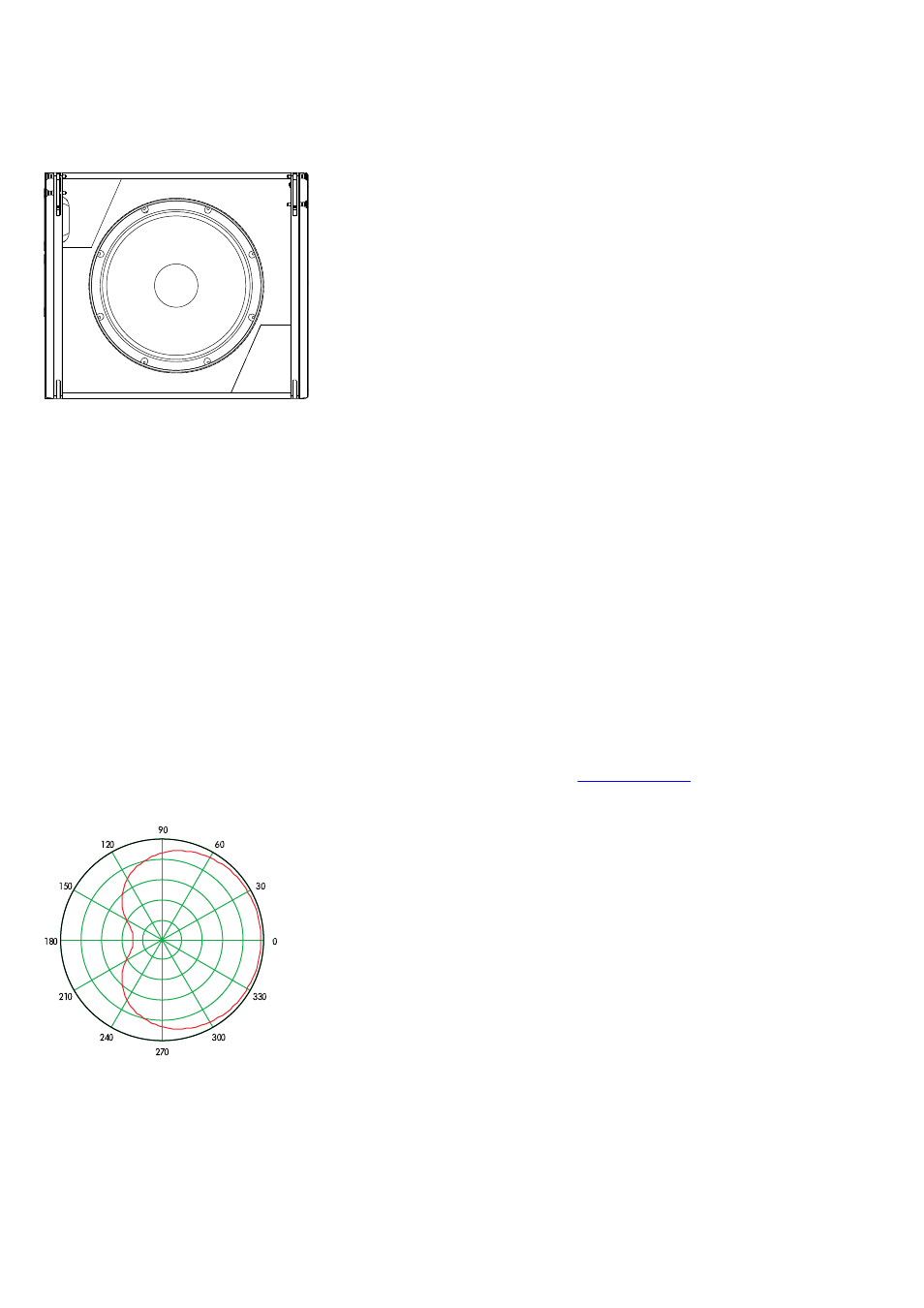V-sub loudspeaker, Product description, V-sub loudspeaker 2.1. product description – d&b V-SUB User Manual
Page 5

2.1. Product description
The V-SUB is a compact high performance cardioid subwoofer for
use with d&b V-Series cabinets.
The V-SUB houses two long excursion neodymium drivers in an
integrated cardioid setup: a 18“ driver in a bass-reflex design
facing to the front and a 12” driver in a two chamber bandpass
design radiating to the rear. The arrangement and tuning provide a
cardioid dispersion pattern using a single amplifier channel.
Its frequency response extends from 37 Hz to 115/95 Hz.
The cabinet is constructed from marine plywood and has an impact
and weather protected PCP (Polyurea Cabinet Protection) finish.
The front of the loudspeaker cabinet is protected by a rigid metal
grill backed by an acoustically transparent foam. Each side panel
incorporates two handles and mounted on the rear panel are four
heavy duty wheels. An M20 threaded flange in the top panel
accepts the d&b Z5013 Loudspeaker stand for the deployment of
full range cabinets.
V-Series rigging components and arrays
Cabinets are mechanically connected using the rigging strands on
both sides of the cabinet front and a central strand at the rear of
the cabinet. All necessary rigging components are mounted to the
cabinet and fold out or slide out when needed. The rigging
components are also intended to interconnect and secure V-SUB
cabinets in ground stack applications.
A detailed description of the V-Series rigging components is given
in the V-Series Rigging manual which is provided with the V Flying
frame.
A detailed description of planning and designing V arrays is given
in the technical information "TI 385 d&b Line array design,
ArrayCalc" which is also provided with the V Flying frame.
The d&b ArrayCalc array calculator can be downloaded from the
d&b website at
www.dbaudio.com
.
Cardioid dispersion
Cardioid dispersion avoids unwanted energy behind the system
and greatly reduces the reverberant field at low frequencies
providing highest accuracy in low frequency reproduction. The
subwoofers can be used as stand-alone solutions or in stacked
combinations with a minimum distance of 60 cm (2 ft) between
adjacent cabinets or between the cabinets and a side wall. When
set up in front of walls, the minimum distance to rear walls is
provided by the wheels on the cabinet rear.
Fig. 1: V-SUB loudspeaker
Fig. 2: Cardioid dispersion pattern
2. V-SUB loudspeaker
d&b V-SUB Manual (1.3 EN)
5
